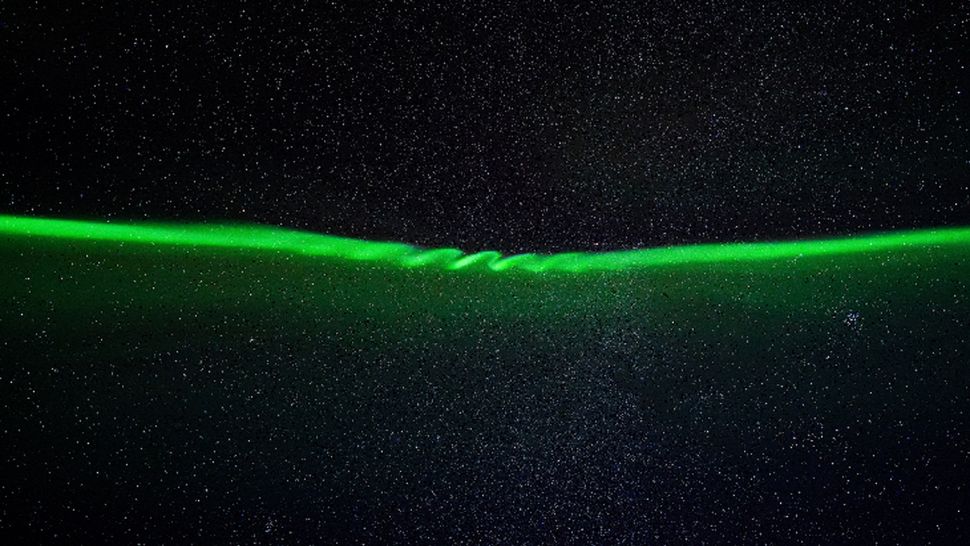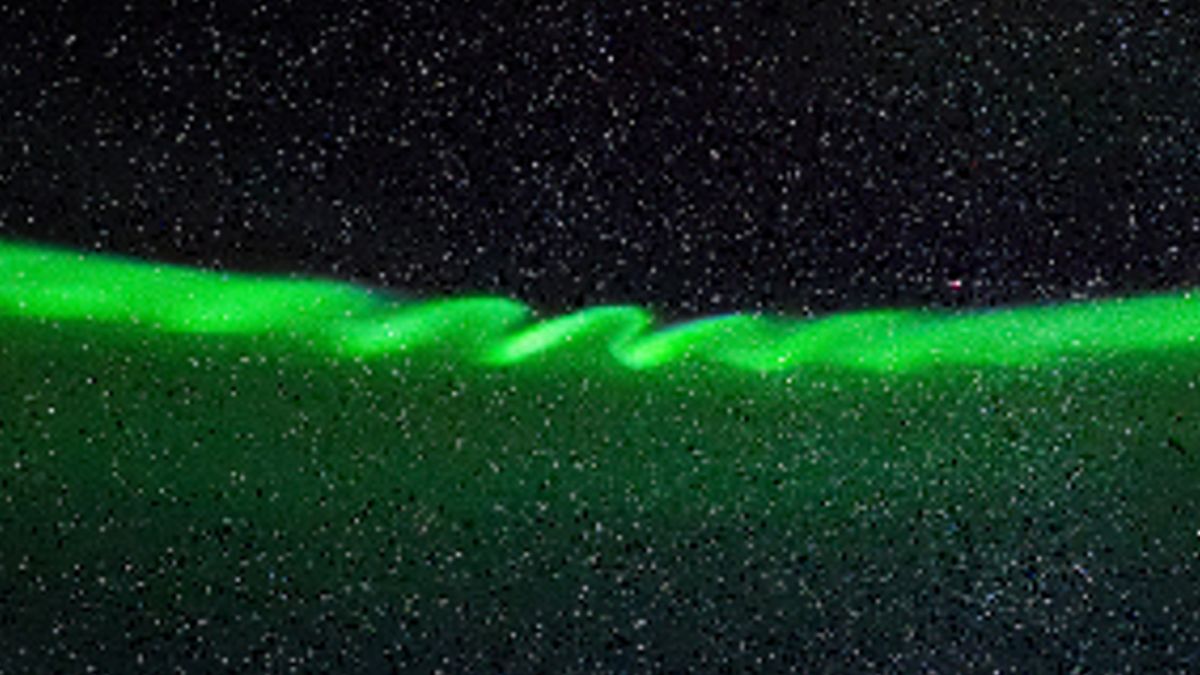Photographer snaps extremely rare 'aurora curls' after magnetic wave rings Earth's atmosphere 'like a bell' [View all]
By Harry Baker published about 20 hours ago
Ethereal green "aurora curls" were photographed in the night sky over Iceland after a gust of solar wind vibrated Earth's magnetic shield like a plucked guitar string. The phenomenon is extremely rare.

A streak of green light in the night sky with ripples running through the middle
Aurora curls are a phenomenon caused by vibrations in the Earth's magnetic field. The luminous squiggles mirror the wavelengths of these magnetic pulsation. (Image credit: Jeff Dai)
A single streak of eerily-perfect, rippling green light recently wobbled through the night sky above Iceland, interrupting an otherwise typical aurora, stunning new photos show. The extremely rare phenomenon is the result of large waves vibrating in Earth's magnetic field that are triggered by solar particles slamming into our planet.
Jeff Dai, an astrophotographer and member of The World at Night (TWAN) project, spotted the zig-zagging light show above Kerid — a crater lake in south Iceland — on Jan. 16, Spaceweather.com reported. The unusual phenomenon, known as aurora curls, lasted for "several minutes" before disappearing completely, Dai wrote on Instagram.
Auroras are created when highly energetic particles from the sun bypass Earth's magnetic field, or magnetosphere, and excite molecules of gas, which give off colored light as a result. Normally, these dancing lights swirl randomly across the night sky with no definite shape or pattern.
Aurora curls are a rare, highly organized version of these lights caused by massive ripples in the magnetosphere, known as ultra-low frequency (ULF) waves. These magnetic tremors are most commonly triggered by a gust of radiation from the sun, known as solar wind, colliding with our planet's protective shield and can cause our atmosphere to "ring like a bell," according to Spaceweather.com.
. . .

More:
https://www.livescience.com/space/the-sun/photographer-snaps-extremely-rare-aurora-curls-after-magnetic-wave-rings-earths-atmosphere-like-a-bell

